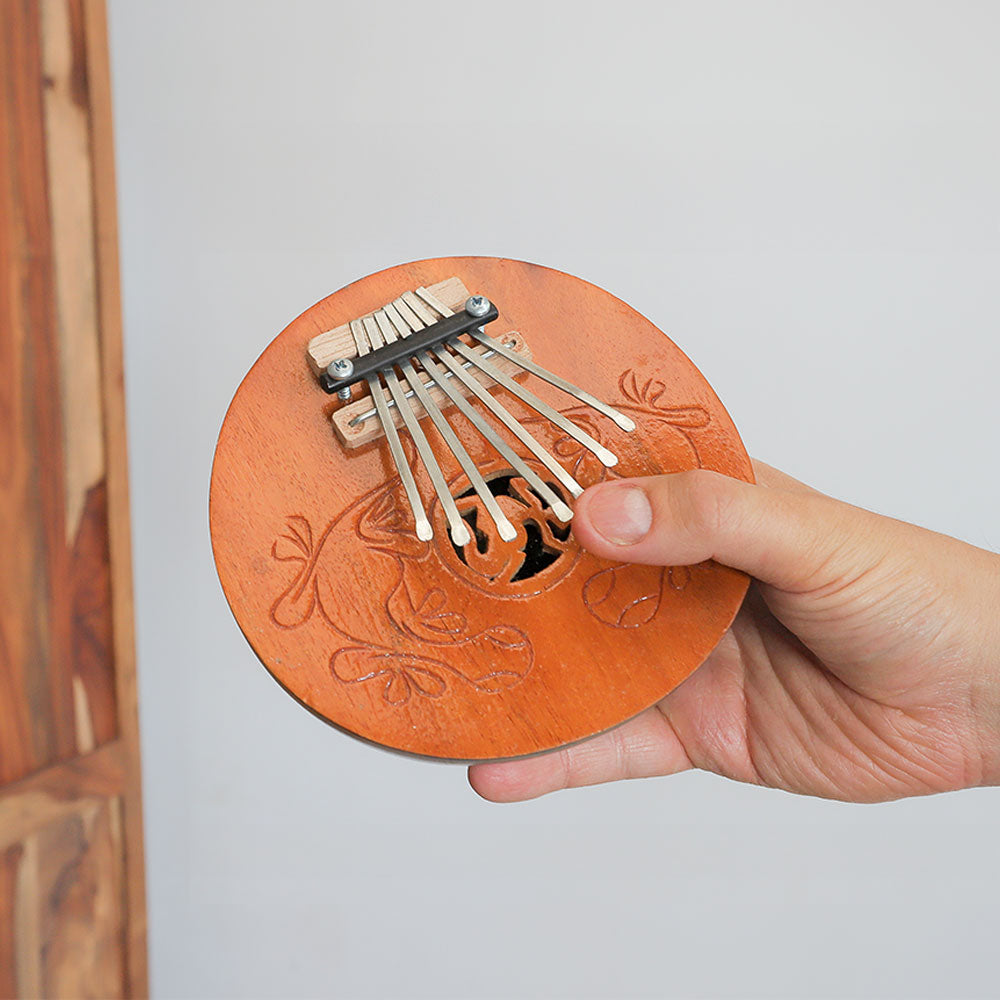Our sound profiles are in technical terms a way to precisely describe the sound of each of our musical instruments. They go beyond mere descriptions, giving you the confidence to make buying decisions based on scientific specifications. Put simply - when we think about the wine industry and the complexities of wine's taste on the tongue and nose, we can apply a similar measurement to the senses of music as they relate to the ear.
Music is all about the repercussions of sound to the ear; with a highly detailed sound profile, you will be able to choose the sound for you based on its description: low-end / bass tones, mid-tone, high tone, dominant frequency range, complimenting sounds; measurement of calm vs. loud with bar for the suitability, e.g., calm = sound therapy vs loud (loudness rating).
Why sound profiles are important?
Understanding the musical instrument's sound profile is not just a luxury but a necessity for musicians, composers, sound engineers, and producers. It equips you with valuable insights into the instruments characteristics, empowering you to make informed decisions in various musical contexts. This knowledge helps musicians select instruments that harmonize within an arrangement. It also aids in crafting expressive performances by leveraging the instrument's unique timbre, dynamics, and resonance.
Composers and arrangers envision the creative possibilities that sound profiles offer. You can orchestrate pieces effectively, balancing different instruments' tonal colours and textures for desired outcomes. Sound engineers, this information is your key to recording, mixing, and mastering music, ensuring that each instrument sits well in the overall mix.
What is a frequency range?
Frequency range refers to the range of pitches or tones a musical instrument or sound system can produce. Think of it as the span from the lowest to the highest pitch you can hear.
What is a difficulty rating?
This indicates how hard it is to play or use a particular musical instrument or equipment. It helps determine what age group or skill level is best suited for using it. A higher difficulty rating means it's more challenging.
How is pitch defined?
Pitch describes how high or low a sound is. When we talk about low, mid-range, and high pitch, we refer to the range of tones produced by an instrument or sound system. Low pitch is deep, mid-range is in the middle, and high pitch is higher in frequency. Typically we refer to a low pitch as being dominantly under 100hz, high pitch being above 2khz and the mid-range being in between.
What is the attack time of a sound?
Attack Time refers to how quickly a sound reaches its maximum volume or intensity after it's played. Some instruments produce sounds that start abruptly, while others have a slower build-up.
What is the decay time?
Decay time is the duration for a sound to fade away after reaching its peak volume. Some sounds fade quickly, while others linger for a longer time.
What is timbre tone colour?
Timbre refers to a sound's tonal quality or character. It lets us describe nuances between various instruments when playing or singing the note.
What is dynamic range?
This describes the difference between the softest and loudest sounds that a musical instrument or sound system can produce. A wide dynamic range means it can make both very smooth and very loud sounds, while a narrow dynamic range means it's limited in its volume range.
Understanding dominant frequency ranges
The dominant frequency range of a musical instrument provides further insight into its tonal characteristics. By identifying the primary frequencies at which the instrument resonates, musicians can make informed decisions about instrument placement, tuning, and EQ adjustments to enhance its presence and clarity within a mix. This knowledge is precious in group settings, where multiple instruments interact and blend their sounds to create a cohesive musical experience.
The dominant frequency range for musical instruments refers to the primary frequencies at which the instrument resonates or produces sound most prominently. It indicates the fundamental pitch or pitches around which the instrument's sound is centered. Musicians and audio engineers use a dominant frequency range to tune, mix, and arrange music, ensuring each instrument occupies its own space within the composition.
Loudness ratings of instruments
The music instrument's loudness rating offers practical guidance for performers, educators, and venue organizers. Understanding the instrument's volume capabilities helps performers adjust their playing technique to suit the desired dynamic level of performance.
It also assists educators in selecting appropriate instruments for educational settings, considering factors such as classroom size and acoustic properties. Venue organisers can use loudness ratings to ensure that instruments are suitable for the acoustics of performance spaces, helping to create optimal listening experiences for audiences.
A music instrument's loudness rating measures the volume of its sound. It measures the instrument's ability to make sound at various dynamic levels, from soft to loud, and is typically expressed in decibels (dB). A higher loudness rating indicates a more significant potential for volume output, while a lower rating signifies a quieter instrument. This rating useful for assessing the instrument's suitability for different musical contexts, performance settings, and arrangements.
Understanding the sound profile of music instruments is needed for musicians and audio engineers. It provides insights into their tonal qualities, frequency range, and loudness rating. This knowledge not only helps in instrument selection, tonal balancing, but also achieving smoothness in the compositions.







